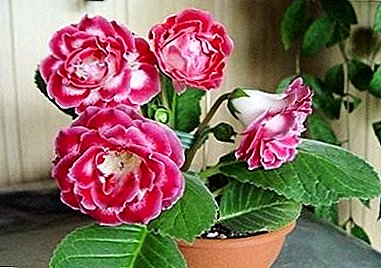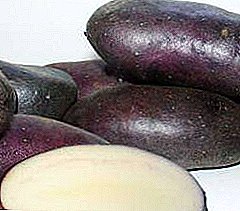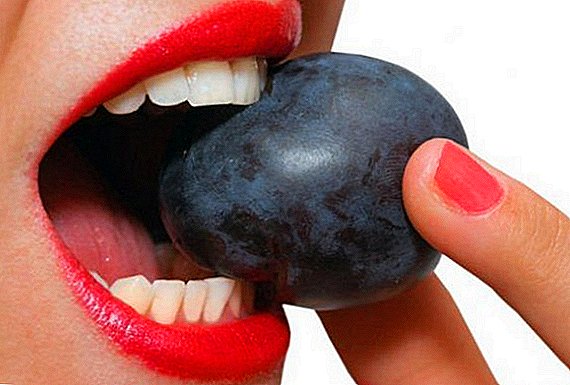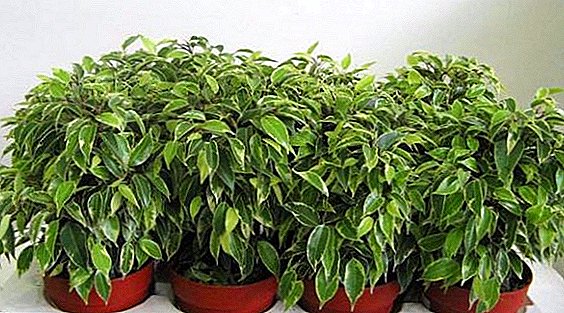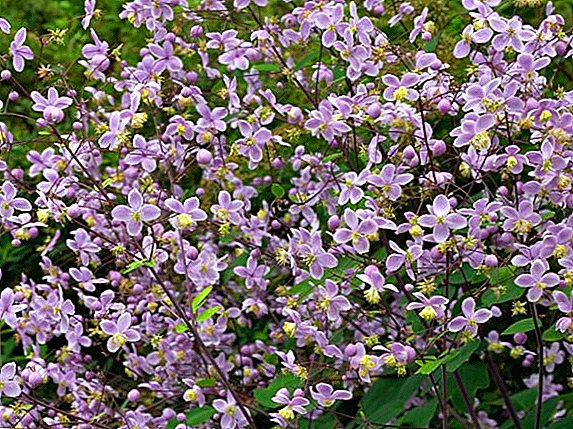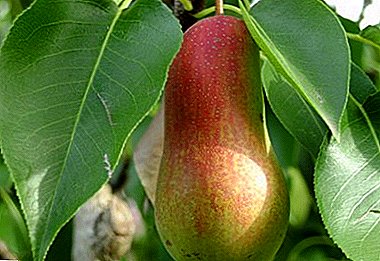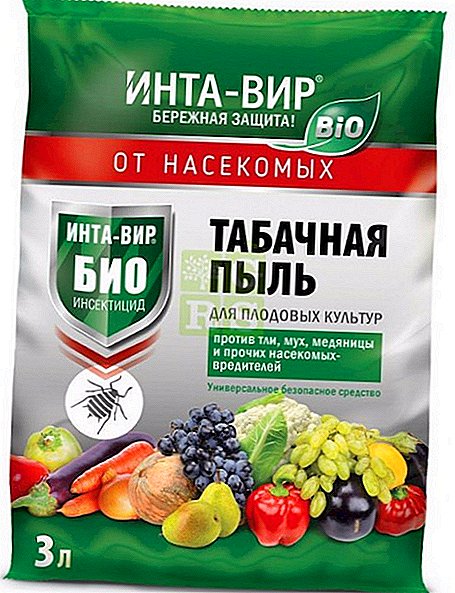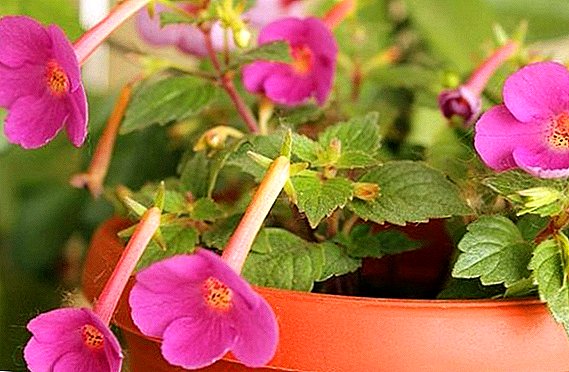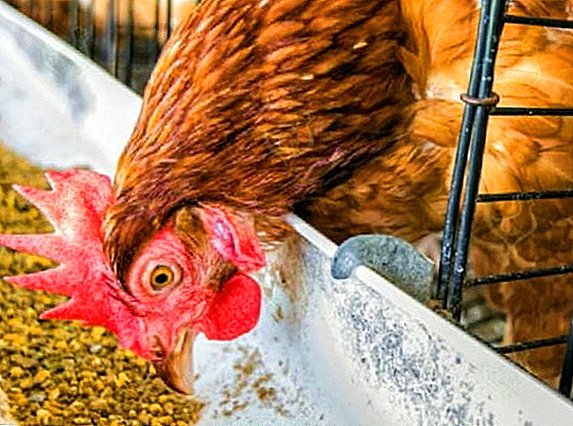 The key to high livestock productivity is a complete balanced diet. The main thing in it is that the body receives nutrients in the right proportions. Bran - one of the components of a balanced nutrition of poultry. Therefore, it is important for the farmer to know not only what value this element of the diet carries, but also how to give bran to hens.
The key to high livestock productivity is a complete balanced diet. The main thing in it is that the body receives nutrients in the right proportions. Bran - one of the components of a balanced nutrition of poultry. Therefore, it is important for the farmer to know not only what value this element of the diet carries, but also how to give bran to hens.
Benefits of bran in nutrition
When processing the wheat grains and other cereals in flour remains the rind from the grains - bran. Their main value is a high fiber content, which helps in the absorption of nutrients from the diet and cleanses the body of toxins and slags. The benefits of bran are determined by their chemical composition and nutritional value.
Dietary fiber in bran - about 40%. This product also contains:
- carbohydrates - 60 g;
- proteins - 16 g;
- fat - 4 g;
- water - 9 g

It will be helpful for you to read about how to germinate wheat for laying hens.
The composition of bran from wheat shells includes (on average):
- fiber - 8.4%;
- nitrogen-free extractives - 53%;
- ash - 5%.
Bran also contains:
- vitamins - B1, B2, B9, B6, B5, C, PP, E, A, K;
- minerals - selenium, phosphorus, iron, magnesium, calcium, zinc, potassium.
Important! Bran are a natural adsorbent, therefore they intensively remove fluid from the body. In order to avoid dehydration, chickens must be provided with clean water in drinking water.

For layers
Bran feeds birds with energy, which is intensively consumed during the laying process - up to 40% of the total energy received. Therefore, increasing the content of bran in the diet of poultry, you, at least, maintain egg production at a stable level, and perhaps even improve it.
We advise you to read about how and how much to feed domestic chickens, as well as how to make feed for laying hens, how much feed you need to lay chicken per day, how to prepare feed for chickens and for adult birds with your own hands.
For broilers
Breeding poultry farm "Don" of the Rostov region conducted an experiment to find out the effect of bran on the growth and development of young meat breeds. 
During the experiment it was found that:
- optimal performance was achieved with a share of bran in the diet of 30%;
- livestock safety was 100% in the group that received a 30% bran supplement, and 98% in the group whose diet did not contain bran;
- herd uniformity was 87 and 83%, respectively;
- bran has a positive effect on the digestibility of the feed, the digestibility of fats, the uptake of nitrogen, calcium and phosphorus from the diet.
Did you know? British ornithologist Joe Edgar came to the conclusion that chickens can survive. Being away from the main pack, they begin to be sad.

Can I give bran to chickens
When adding bran to the diet:
- egg production improves;
- the period of productive use of poultry increases;
- incidence among livestock decreases;
- nutrient absorption from feed is improved.
Bran provides the body with young fiber and additional vitamins, which is especially important in the winter. They contribute to the accelerated saturation of the body by improving the absorption of trace elements, and also remove harmful substances from the body.
How to give chickens bran
There are several ways to make bran bran. The easiest way is to dilute the bran with water to a very thick porridge and put it in the feeder, based on the norm of 20 g per 1 layer. Bran can be mixed with whey - this will increase the nutritional value of the mash.  The composition of whey contains easily digestible proteins, lactic, citric, nucleic acids, trace elements and vitamins. A more rational way is to mix bran together with vegetables and grain components.
The composition of whey contains easily digestible proteins, lactic, citric, nucleic acids, trace elements and vitamins. A more rational way is to mix bran together with vegetables and grain components.
Daily rate
The daily rate for an adult bird should not exceed 30-40 g. Starting to introduce into the diet a new type of feed should be taken with small doses - 5 g for 2-month-old young animals, with a weekly change in the norm by 5 g. This dietary supplement is well absorbed by the bird.
But if you are seeing diarrhea, you need to consult a veterinarian. This may be a sign of an infectious disease not related to feed.
Important! If a disease is suspected, isolate the chicken from the rest of the herd and get treatment advice from the veterinarian.

Read more about whether a rooster needs a rooster to carry eggs, when young pullets begin to rush, why chickens do not carry well, why they carry small eggs and peck at them.
How to cook bran mash
In the mash include:
- root vegetables: carrots, potatoes - 50%;
- bran - 30%;
- crushed grain: corn, wheat, oats - 20%.
Additionally, you can add to the mash (based on 1 chicken):
- chalk - 3 g;
- fish oil - 1 g;
- meat and bone meal - 5 g;
- salt - 1 g
For the mash, yeast can be performed by boil, bezoparnom or starter method. When yeast also increases the nutritional value of the mash. 
Important! In the summer of yeast feed can not be carried out. An excess of protein can cause unplanned molting of livestock, reduce egg production and cause digestive upset in chickens.
Care should be taken to add whey in the summer - it also contains a lot of protein. But in the winter the use of mash is necessary because chickens are deprived of free-range, there is no green in the diet, so the body does not receive enough nutrients.
Bran do not give chicks up to 2 months due to the fact that their bodies are not yet adapted to the absorption of coarse fiber. The required amount comes with boiled carrots and pumpkin. Bran chicks can be given in masses, starting from 2 months.
Did you know?The number of chickens on the planet exceeds the number of people 3 times.
Video: bran chicken feeding
Feeding rules
Wet food is given to chickens in a separate feeder. They feed food to the whole flock in the feeder, and the birds themselves determine the amount of food they need. It should be borne in mind that the chicken will not eat more than its body requires. Therefore, do not overfeed with food in excess - it can stagnate and deteriorate.
Features of bran diet
Bran as a battery has 2 key features:
- contain a large amount of fiber;
- have a positive effect on the absorption of nutrients.
Improving the nutritional value of feed is important in the cold season, when the bird's body must adapt to the cold. In the fall, chickens begin to molt, the plumage prepares for winter, so the birds need improved nutrition. 
Broiler Chickens
Chicken of meat breeds are prone to excessive absorption of feed, due to this they quickly gain weight. The disadvantage of this diet is excessive fat deposition. To eliminate this disadvantage, bran is introduced into the diet, which will also limit the amount of grain.
Learn how to feed broiler chickens, how to give them nettles, what vitamins to give to broiler chickens.
In the diet of broilers, starting from 2 months, bran should be 5-10% of the diet. At the initial stage, the norm of bran - 5 g per 1 chicken per day. Gradually, the rate is adjusted to 30 g for an adult chicken.
Kuram in the period of molting
Seasonal molt begins at the end of summer or early autumn and lasts 1.5 months. The body at this time is very weak and requires intensive nutrition, high-calorie and diverse. The norm of bran for chickens during the molting period is 30-40 g. Sunflower oil cake is also added to the ration and the rate of compound feed is increased by 10-15 g per day. 
In the mash molting bird add:
- fish and meat-bone meal - 5 g / day;
- serum - 10 g / day;
Autumn is rich in vegetables and fruits, which makes it easy to diversify the diet of feathery feathery apples, pears, plums and lots of vegetables - potatoes, beets, carrots, pumpkin, zucchini, melons, watermelons, cucumbers, etc. The source should be available Calcium - chalk, shells, eggshells, cottage cheese. They feed the birds 3-4 times a day.
Feeding scheme:
- 1st feeding - grain ¼ norms;
- 2nd feeding - mash;
- 3rd feeding - ½ grain grain;
- 4th feeding - grain ¼ norms.

Grain can be poured into the feeders as it is eaten, so as not to attract rodents or wild birds - sparrows, pigeons, etc.
How to feed layers for high egg production
To increase egg production, vitamins A, D, E, B12 must be present in the diet.
Signs of lack of vitamins and ways to fill:
- A sign of a lack of vitamin A in the diet is a light yellow yolk. Pharmaceutical vitamin A is added to layers to drink.
- A sign of vitamin D deficiency is a soft and thin shell in eggs. To increase its supply, it is necessary to conduct a yeast feed. Yeast is the most optimal source of this element.
- Vitamin E deficiency results in low egg fertility, such eggs cannot be used for incubation. Vitamin E comes along with germinated grains of wheat or corn.
- The intake of vitamins of group B provide bran, legumes, cottage cheese, fish meal. This group is responsible for the mucous membranes, the digestive system and the organization of the egg-laying process. If egg-laying is difficult and the layer begins to shed without cause, these are signs of a lack of B vitamins.

If you add to the diet of pharmaceutical vitamins for animals, store them in a cool place, without access to sunlight. Remember that vitamins cannot be stored for a long time - they begin to break down.
We recommend reading about what vitamins chicken hens need for egg production, as well as how to increase egg production in chickens in winter.
Yeast can be sponge, straight and ferment. In all cases, a preliminary dilution of a portion of the feed with yeast is used, followed by the addition of the remaining portion. 20 g of yeast are dissolved in a straight-bottomed way in 1 l of warm water with the addition of 1.5 kg of crushed grain.
Insist the mixture for 6-7 hours, stirring occasionally. It is necessary to give such food fresh, at the rate of 20 g on 1 layer. Grains are germinated with warm water in a 1: 1 ratio. Grain germinates in 1-2 days and then is fed as a whole.
Video: how to increase egg production in chickens
What can not feed the hens
Layers are omnivores and will eat any plant or animal food found in nature.
But chickens, like other agricultural birds, are forbidden to feed people with food:
- muffins and pastries;
- sausages, sausages and smoked meats;
- jam;
- hard cheeses;
- butter;
- fish semi-finished products in any form - raw, fried, boiled, grilled;
- spice.

Unsuitable for chickens grass, which is a raw material for the production of poisons or hallucinogenic, as well as one that causes the risk of poisoning. But in this matter, you can completely rely on the bird: as a representative of the wild nature, it accurately determines the grass it needs.
Important! Potato tops are considered poisonous to birds. It is not recommended to feed chickens with tomato tops.
Milk-stricken bread is also unsuitable for feeding birds. It can be dried in the oven to the state of crackers, neutralizing the action of mold fungi.
Organizing food for poultry, it is important not to overdo it with the improvement of the diet and its improvement. Bran is a source of additional nutrients in the basic diet.
Video: what can not feed chickens and other birds
They do not replace grain components or greens. Therefore, when choosing the right diet, you should also be guided by common sense and your observations of the behavior of chickens, their reaction to certain feeds. This will help you grow healthy and productive poultry.


